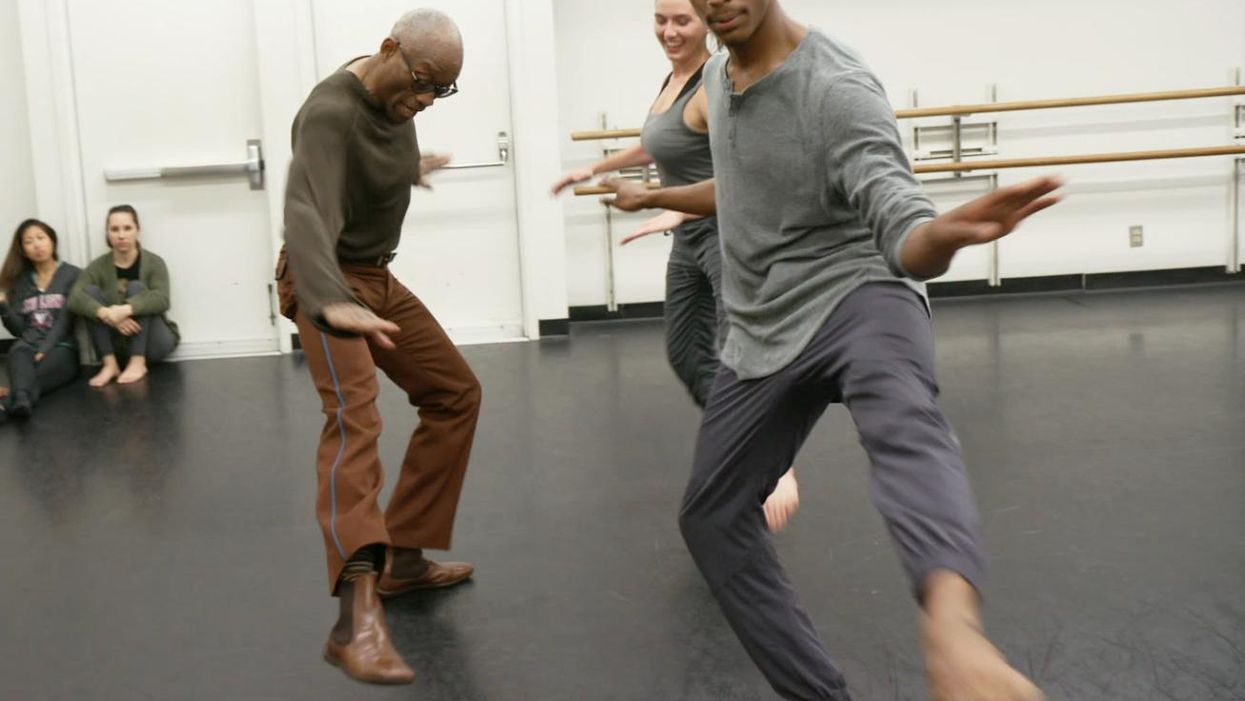3 Lessons the New Bill T. Jones Documentary Offers Dance Educators Going Back to the Classroom
“What are we desperate for?”
Rosalynde LeBlanc stares at her cast of dancers waiting for an answer. It’s the final rehearsal for D-Man in the Waters. The first run of the piece showed the choreography but not the “why” of the movement. The dancers need to know, collectively, what makes the stakes so high.
This scene centers the new documentary Can You Bring It: Bill T. Jones and D-Man in the Waters. Directed by LeBlanc and Tom Hurwitz, the film explores how one dance responds to tragedy, and, by turn, the hard questions to answer when responding to grief as a group.
When technique and choreography classes return this fall, the disruption and trauma of this pandemic will require more than a syllabus and a getting-to-know-you exercise to foster trust and vulnerability. This documentary can serve as a resource for dance educators welcoming students back. Can You Bring It is a source of radical empathy, a testament to the power of dance during great adversity.
D-Man in the Waters
, widely regarded as Jones’ masterpiece, originally premiered in 1989, one year after the death of Arnie Zane, co-founder of the Bill T. Jones/Arnie Zane Company and Jones’ partner. “D-Man” is Demian Acquavella, a company dancer who had contracted HIV/AIDS shortly before the making of the work. The documentary intercuts archival footage of the original cast with an intimate filming of current company members dancing. The urgency of D-Man in the Waters is present 32 years later.
Make Space to Talk About Trauma
In 2016 LeBlanc staged the work on the students of Loyola Marymount University. During the process, shown in the film, she and the cast confront questions that are still urgent for classrooms in 2021. While teaching the choreography LeBlanc makes space to talk with the students about trauma. What are the pressing issues for this generation? She and Jones listen to them talk about gun violence and social divisions. The conversations allow the students to find ownership in the dance and respect its original intent.
Use Dance to Grieve
Life during COVID-19 will be a source of inspiration for many choreography students. Can You Bring It shows today’s young makers that they are not alone. Pandemics are unique but not new. The pain and despair of the AIDS epidemic are shared in interviews with the original cast. The Jones/Zane company dancers describe D-Man as a place to grieve. Dances are containers for feeling.
Build Community
In response to the question of desperation, one student answers with a personal conflict. LeBlanc pushes back, asking them to think about the “we,” not the “me.” Being part of a “we,” being in community, is something many students and teachers may need to relearn after 17 months of isolation. Sharing space means something different in 2021. Dancemaking post-coronavirus feels less lonely after watching the Loyola Marymount students learn and embody the high stakes of Jones’ work.
The D-Man in the Waters choreography evolved out of group improvisations. As the company mourned the death of Zane, they came together, danced together, created together. Jones describes the dance as an exploration of “what it takes to live.” Movement succeeds where words fail. Dancing together will continue whether it’s online, in person or hybrid. This documentary is a master class on dance as a way to process grief. Can You Bring It: Bill T. Jones and D-Man in the Waters teaches that what it takes to live is being together.
Now playing in theaters and virtual cinemas. Find showtimes near you
here.




